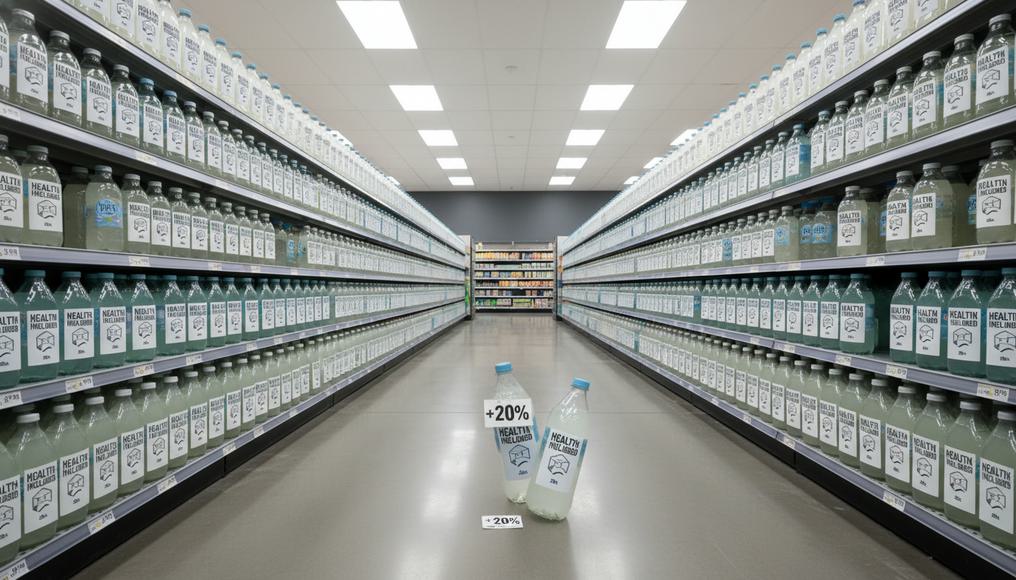@3aukcom A-Level Economics: Classification of Goods – Free, Private, Public, Merit & Demerit Discover the classification of goods in A-level Economics! From free goods like air with zero opportunity cost, to private, public, merit, and demerit goods, understand market failures and government interventions like taxes and subsidies. Key for exams! Visit 3auk.com for free A-level study notes and online exercises. #aleveleconomics #economics #alevel #goodclassification #publicgoods #meritgoods #demeritgoods #marketfailure #alevelrevision #alevel2025 #alevel2026 ♬ Presentation – FlyFlyMusic
Why Classify Goods in Economics? (It’s More Fun Than You Think)
Classifying goods in economics might seem like a dry task, but it’s actually the key to unlocking why governments step in to fund things like roads and schools instead of leaving everything to the market. If you’re just starting with A-Level economics, this is your guide to resource allocation – essentially, how societies decide who gets what in a world full of scarcity. For a broader introduction to CAIE A-level Economics (9708) for 2025–2026, check out our friendly starter guide to get up to speed on the basics. Markets handle some things brilliantly, but flop on others, and understanding types of goods like free air or expensive coffee reveals the real story. By the end, you’ll see how imperfect information leads to poor choices, and you’ll even laugh at why we regret those late-night snack attacks. Ready to dive into the world of economic goods classification?
Think of it like a party: some treats are endless and free for all, others spark a grab-fest, a few benefits everyone without a price tag, and then there are the guilty pleasures or overlooked health boosts that need a nudge. Scarcity demands smart choices, and this classification system helps allocate resources efficiently. To deepen your understanding of scarcity and resource allocation fundamentals, explore our guide on CAIE AS Level Economics: Scarcity, PPCs and Resource Allocation. Experts at the World Bank note that poor resource allocation due to market failures costs the global economy trillions in wasted productivity each year. This isn’t abstract – it’s why your education might be subsidized or why sugary drinks get taxed. Let’s break it down in a way that’s engaging and straightforward, without the textbook boredom.

Free Goods: Economics’ Rare Gems of Abundance
Free goods are the elusive wonders in economics where abundance reigns, making scarcity irrelevant. These are resources so plentiful that consuming them doesn’t cost anyone else or require payment – zero opportunity cost means no tough trade-offs. For newcomers to economic theory, free goods serve as a simple starting point before tackling the complexities of rationing scarcer items. They highlight that not every resource needs a market to manage it. If you’re grappling with opportunity cost concepts, our article on Understanding Scarcity, Choices, and Opportunity Cost in A-Level Economics provides clear examples tied to real decision-making.
Imagine lounging on a sunny beach, absorbing rays without anyone charging admission. Sunlight is non-rivalrous – your enjoyment doesn’t diminish mine – and non-excludable, as you can’t block it from others. Fresh air in unpolluted areas works the same way; breathe deeply with no bill coming. No resources are sacrificed to enjoy these, leaving your time and money for things that actually require allocation, like choosing between a movie ticket or a new book. But here’s the ironic part: human activity can turn even these into economic concerns. Urban pollution means clean air now requires filters or relocation, shifting it from free to valuable.
Traditional economics texts describe free goods as naturally unlimited, so no pricing mechanism is needed – a concept rooted in principles from early thinkers like Adam Smith. In today’s world, think open-source software: download as many copies as you want without reducing availability for others. Or knowledge from public domain sources; one person’s deep dive doesn’t erase it for the next. However, environmental changes are challenging this – excessive sunlight exposure links to health issues, prompting investments in shade or sunscreen industries. For A-Level students, free goods illustrate perfect allocation with no waste, setting the stage for why other types demand careful management. This foundation is crucial for grasping broader economic concepts.

Private Goods: The Backbone of Market Efficiency
Private goods, often called economic goods, are where markets truly excel in handling scarcity. They are rivalrous – if one person uses it, less is left for others – and excludable, meaning access can be restricted to paying customers. This setup makes them ideal for resource allocation through prices, where demand and supply naturally balance out. If you’re new to economics, relate it to everyday shopping: grabbing the last slice of pizza before someone else does, or buying a concert ticket that excludes non-buyers. For a beginner-friendly overview of how the price system drives this, see our CAIE AS Level Economics: The Price System and Microeconomy Guide.
The rivalry aspect drives the system: consuming a private good like a smartphone depletes the stock, prompting opportunity costs – do you buy the latest model or save for a vacation? Resources like materials, labor, and innovation are directed based on these choices. Excludability ensures producers can charge, using tools like patents or security to prevent unauthorized use, which encourages further production and efficiency. It’s akin to a high-stakes game where only those willing to pay advance, fostering competition and progress.
Global data shows consumer spending on private goods reaches tens of trillions annually, underscoring how markets allocate them effectively for willing participants. Yet, this system isn’t flawless; it can widen inequality by pricing out lower-income groups, leading to debates on fairness. Take streaming platforms: subscribers enjoy unlimited access (until bandwidth limits), but non-payers are locked out, driving content creation while highlighting exclusion. Still, this rivalry and excludability spur innovations, like smartphones evolving from bulky devices to essential tools. For beginners, private goods demonstrate core market dynamics without needing government intervention, teaching the basics of efficient resource allocation. Reflect on your own choices – that impulse buy teaches more than any lecture.

Public Goods: Shared Benefits and the Free Rider Challenge
Public goods represent collective benefits that markets struggle to provide due to their non-rivalrous and non-excludable nature. Your use doesn’t reduce availability for others, and it’s hard to exclude non-payers, leading to underprovision in free markets. This causes market failures in resource allocation, where governments often step in with taxes to ensure supply. For A-Level novices, public goods explain why things like national parks or fireworks displays exist – everyone gains, but voluntary contributions fall short. Learn more about how governments address these market failures in our Government Intervention in Markets Guide.
Non-rivalry allows broad access without depletion: a radio broadcast entertains millions without fading for the last listener. National security fits perfectly – protection extends to all citizens without dividing it up. Non-excludability complicates things, though; you can’t easily charge only those who benefit, inviting free riders who enjoy perks without contributing. It’s like a communal barbecue where some eat but don’t bring dishes, undermining the effort.
Historically, even lighthouses shifted from private to public funding because sailors benefited without paying tolls. Today, public transportation or clean air initiatives face similar issues – congestion makes them somewhat rivalrous, but exclusion is impractical. In the U.S., defense spending tops nearly a trillion dollars yearly to counter free rider problems in international alliances. For students, this underscores the role of fiscal policy in reallocating resources for societal good, such as infrastructure that prevents economic losses from disasters. Ultimately, public goods show the value of cooperation, even if it requires enforced sharing to work.

Merit Goods: Encouraging Wise Choices Through Subsidies
Merit goods are those with significant long-term benefits that markets undervalue due to imperfect information, leading to underconsumption. Individuals focus on immediate costs over positive externalities, like societal health gains, resulting in suboptimal resource allocation. Governments address this with subsidies or free provision to promote consumption. If you’re starting economics, merit goods clarify why education or vaccinations receive public support – they’re investments in future well-being.
The core issue is information asymmetry: people might skip gym memberships, unaware of lifelong health payoffs, or undervalue schooling amid short-term financial pressures. This ignores spillovers, such as educated workers boosting overall productivity. Reports from the OECD indicate that underinvestment in these areas hampers economic growth. Solutions include making them accessible via public funding – consider free school meals enhancing child development and future earnings.
Real examples abound: Healthcare systems like the UK’s NHS provide universal access, raising life expectancy and averting productivity losses from illness. Education subsidies correlate with 10% higher earnings per additional year, fueling GDP growth – countries with strong public systems often lead in innovation. Public libraries offer knowledge without barriers, yielding cultural and economic returns. In essence, merit goods realign allocation toward sustainable benefits, transforming individual oversights into collective advantages. Next time you appreciate a free museum visit, recognize it as smart policy in action.

Demerit Goods: Curbing Overindulgence with Targeted Policies
Demerit goods lead to overconsumption because imperfect information hides negative externalities, like health costs borne by society. Markets oversupply them since private benefits seem high, misallocating resources toward harmful activities. Governments use taxes or regulations to internalize these costs and reduce use. For beginners, demerit goods justify interventions like tobacco duties – they protect both individuals and the public purse.
Misleading perceptions fuel the problem: marketing portrays alcohol as social fun, downplaying accident risks or lost productivity. This excess generates externalities, from increased healthcare spending to environmental damage. The WHO reports millions of annual deaths from tobacco alone, with economic costs in the trillions. Policies like excise taxes raise prices, reflecting true societal expenses and shifting resources to positive areas.
Key cases include cigarettes, where taxes have cut smoking rates dramatically worldwide. Alcohol levies reduce binge drinking and related harms, with studies showing youth consumption drops. Sugary foods face similar scrutiny, as obesity rates have soared; targeted taxes in places like Mexico have lowered intake. These measures not only save lives but also free up resources for merit goods. Demerit goods remind us that without guidance, short-term thrills can derail long-term prosperity – policies provide the necessary check.

Applying Economic Goods Classification in Real Life
The classification of goods isn’t just academic; it shapes policies you encounter daily. During the pandemic, vaccines emerged as merit goods, with subsidies overcoming hesitancy to save lives and restart economies. Roads blend public and private traits – tolls address free riders, reducing congestion and emissions, as seen in urban schemes cutting traffic by up to 30%. Demerit interventions, like plastic bag taxes, redirect consumption toward sustainability. To see how resource allocation plays out in different economic systems, dive into our Resource Allocation in Economic Systems Guide for AS Level Beginners.
Consider digital services: many start as private goods with subscriptions but evolve with public elements, like free public Wi-Fi. Fintech innovations during crises demonstrated private markets’ agility, allocating capital worth billions efficiently. Emerging challenges, such as climate change, are scarce-ifying free resources like clean water, demanding new allocation strategies with trillions in potential cleanup costs. For A-Level learners, connecting these to current events strengthens understanding of market failures and solutions. Mastering this framework equips you to analyze and propose fixes for real-world issues.

FAQ: Quick Answers on Types of Goods in Economics
- What’s the difference between free and public goods? Free goods are naturally abundant with no cost, like sunlight; public goods are scarce but shared, like police services, requiring government provision to avoid free riders.
- Why do governments subsidize merit goods like healthcare? To counter underconsumption from imperfect information, unlocking positive externalities that enhance societal productivity and growth, as per global economic analyses.
- Are demerit taxes overreach or effective? They’re smart tools to reduce overconsumption, with tobacco taxes halving smoking rates in many countries since the mid-20th century.
- Can goods shift categories? Yes, like masks during crises moving from private to public via government distribution for broader equity.
- Explain the free rider problem simply. It’s when people benefit from public goods without paying, like enjoying streetlights funded by others’ taxes.
- Do examples of goods change over time? Absolutely – abundant resources like freshwater can become economic due to overuse or climate shifts.
- How does this relate to opportunity cost? Free goods have none, but others involve trade-offs, such as choosing merit investments over demerit indulgences. For practice, try our CAIE AS Economics Topic Questions to test your knowledge.
- Key takeaway for A-Level exams? This classification is essential for essays on market failures, scarcity, and policy responses in core papers.
Wrapping Up: Mastering Goods Classification for Better Economics Insight
From abundant free goods to regulated demerits, understanding these types demystifies resource allocation and government roles. Armed with this knowledge, you’ll navigate economic discussions with confidence, making smarter personal and policy choices. Your future – and those exam scores – will thank you. For more in-depth study, access our free CAIE AS Level Economics Study Notes to reinforce these concepts.
References
- World Bank. (2023). Global Economic Prospects.
- Economics Online. (2024). Free Goods Explained.
- Khan Academy. (2024). Public Goods and Market Failure.
- OECD. (2023). Education at a Glance.
- WHO. (2024). Tobacco Fact Sheet.
- UNESCO. (2024). Global Education Monitoring Report.
- UNEP. (2023). Emissions Gap Report.
- CDC. (2024). Alcohol and Tobacco Use Statistics.